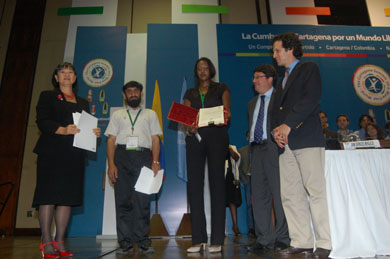 The Cartagena Summit concluded on 4 December with the high level representatives of approximately 100 States Parties signing the Cartagena Declaration, reaffirming their commitment to ending the suffering and casualties caused by anti-personnel mines and to achieving a world free of mines.The Cartagena Summit on a Mine-Free World was the name given to the Second Review Conference of the Convention on the Prohibition of the Use, Stockpiling, Production and Transfer of Antipersonnel Mines and on Their Destruction. The Convention seeks to end the suffering caused by antipersonnel mines – by prohibiting their use, requiring the destruction of existing stockpiles, and obliging States to clear mined areas and assist victims. This landmark international legal instrument, which has been accepted by 156 States, entered into force on 1 March 1999. Article 12 of the Convention states that a Review Conference shall be convened by the Secretary-General of the United Nations five years after the entry into force of the Convention. The purpose of the Review Conference is to: review the operation and status of the Convention; consider the need for and the interval between further Meetings of the States Parties; take decisions on submissions of States Parties as provided for in Article 5; and, adopt, if necessary, conclusions related to the implementation of the Convention. At November 2008 Ninth Meeting of the States Parties, it was agreed that the Convention's Second Review Conference would be held in Cartagena, Colombia from 30 November - 4 December 2009. In addition, the States Parties agreed to designate Susan Eckey of Norway as President of the Second Review Conference. Ambassador Eckey called upon the international community to seize the opportunity presented by the Second Review Conference to do the followi
The Cartagena Summit was held at the highest possible level. High level commitments were made to pursue the aims of the Convention during the next five years. |
